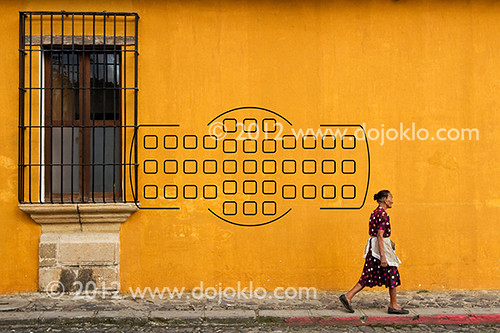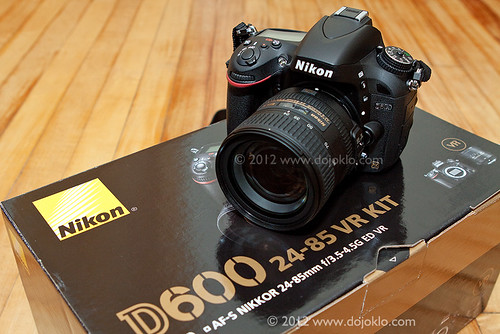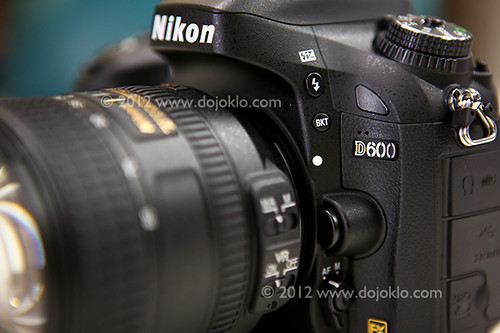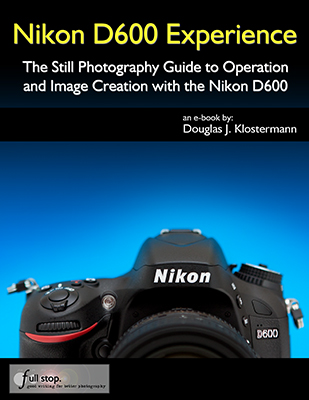Introducing the Nikon D600 Full Frame dSLR Camera and the updated Nikon D610:
(With additions made at the end of this article to explain the features added to the updated Nikon D610)
(First, I have been corrected on the title of this post – the Sony a850 was the first “affordable” full frame (meaning ~$2000 price at introduction). But as I unfortunately only have time in my work day to mostly follow, research, and write about Canon and Nikon news and dSLR cameras, this one slipped by me!)
The day has finally arrived! For a couple years I have been suggesting to my readers that when choosing lenses they anticipate the time that, someday soon, full-frame cameras will be more affordable. This was both to address the possibility that certain DX lenses could not be used on an FX body, plus how a lens’ field of view will be affected by a full frame vs. a cropped APS-C sensor. Well that day has now arrived with the introduction of the Nikon D600. Initially priced at $2100 (body only), it can certainly be considered the first enthusiast full-frame (or in Nikon terminology, FX Format) camera – and which should also be more than rugged enough and capable enough for a semi-pro or a second body. And as icing on the cake, DX lenses are indeed compatible with this new FX camera (although the resulting image will be a 10MP DX crop).
(Of course the full-frame Canon 5D Mark II is under $2000 at this time, but that is due to it recently being replaced by the 5D Mark III. When the 5D Mark II was new, it was priced at around $2700, and didn’t go below $2400 for most of its active life. And you don’t want the 5D Mk II anymore – its continuous frame rate is slow and its AF system isn’t so hot, especially compared to current models.)

Nikon D600 full frame dSLR camera, shown with kit lens Nikkor 24-85mm f/3.5-4.5G ED VR – Image by author. Special thanks to Newtonville Camera of Newton, Mass.
Sensor, Viewfinder: The D600 sits between the D7000 and the recent D800, being closer – I would say – to a full-frame version of the D7000 (with a few more megapixels). It boasts a 24.3 megapixel image sensor (over the 16.2 MP of the D7000) and the same 39 point autofocus system with 9 cross type points and similar custom settings options as the D7000. This full-frame size sensor delivers not only improved resolution but also increased dynamic range and improved low light / high ISO performance (6400 max. ISO expandable up to 25,600). As noted above, the full-frame sensor will also affect the field of view of your lenses. For those coming from an APS-C sized sensor camera, a 50mm lens will now act as a true 50mm lens – no more 1.5x crop factor to consider. This means that your wide angle lenses will now act as true wide angle lenses, but your telephoto lenses will no longer have quite as much reach as you may be used to. However, the D600 offers a DX setting so that you can act as if you have a DX sized sensor. This camera also has a nice big and bright 100% view viewfinder so that one can easily see their subject, make use of the AF Points, and frame their images.
Interface and Controls: Much of the user interface (menus, displays) as well as the controls are also similar to the D7000, with a few changes such as the addition of the Live View/ Movie switch, a locking Mode Dial switch, and the addition of a Picture Control button. The newly locking Mode Dial contains the customizable user modes U1 and U2 so that you can set up the camera to quickly switch to your desired mode and settings, including your desired Custom Settings parameters. In the“why did they do that?” category, Nikon has swapped the position of the Image Zoom [+] and [-] buttons used during image review. So overall, any D7000 user will be immediately comfortable and familiar with this D600 body. Changing the AF Mode and AF Area Mode of the D600 is done with the “hidden” button inside the AF/M switch at the base of the lens, in conjunction with the Command Dials (as with the D7000). The D600 offers two customizable Function Buttons on the front of the camera to set for whichever functions you desire.
Brief Commercial Interruption: Of course I offer a Full Stop e-book user’s guide for the Nikon D610 – Nikon D610 Experience, and one for the D600, Nikon D600 Experience. This first book is currently the highest rated D600 guide on the market, with nearly 50 five star reviews! Click the links to learn more about the guides and all my other e-book camera guides for Nikon and Canon dSLR cameras.

Simulated view of the Nikon D610 / D600 viewfinder showing the location of all 39 autofocus AF Points
Autofocus (AF) System / FPS: As mentioned, the D600 makes use of the 39 point autofocus system with 9 cross-type points of the D7000. For those not familiar with this system, it is somewhat sophisticated in that it offers several combinations of autofocus modes (for still subjects or a variety of situations with moving subjects), autofocus area modes (how many of the AF points are active and how they track), AF related Custom Settings (to tweak the performance of the system to your subject and needs), and customizable controls (to set which buttons do what). There is a bit of a learning curve in order to take full advantage and full control of it, but once mastered it enables a photographer to consistently and successfully capture sharp images of still subjects and to track and capture moving subjects in a variety of ways. You can start to learn about this system in my post explaining how to Take Advantage of the Nikon D7000 Autofocus System. You can put the AF subject tracking to good use as you shoot up to 5.5 frames per second with the D600. This is a great frame rate for most action, sports, or wildlife photography – any slower misses important moments and any faster starts to give you nearly identical multiple shots which become a time and memory space drain when backing up and editing. (Of course if you shoot something like motorsports or professional sports, you likely need the faster frame rate of a full-fledged pro camera!)
Body, Size, Battery, Memory Cards: Regarding size and weight, the D600 is slightly larger than than the D7000, but surprisingly 20g lighter (with the battery.) It shares the same EN-EL 15 battery as the D7000, and offers a new MB-D14 battery grip for the use of two batteries – and to perhaps make the camera more comfortable for some users particularly when using larger lenses or working often in portrait orientation. The top and rear of the camera body are constructed of strong and light magnesium alloy, and the body is weather sealed against dust and moisture (including the battery and memory card doors). Although the entire body isn’t magnesium like the Canon 7D or 5D Mk III, it should prove to be more than rugged and durable enough for most any photographer’s needs. The D600 has two SD memory card slots which can be configured in a variety of ways including overflow (when one card fills images are automatically then saved to the 2nd card), simultaneous back-up (each image is saved on both cards), or stills on one card and movies on the other. The LCD monitor on the rear of the camera is now a slightly larger 3.2 inches (compared to the 3″LCD of the D7000) with 921K pixels, and is optimized for minimum glare and good contrast in sunlight.

Unboxing of the Nikon D600 full frame dSLR camera, shown with kit lens Nikkor 24-85mm f/3.5-4.5G ED VR – Image by author. Special thanks to Newtonville Camera of Newton, Mass.
Accessories: Nikon is offering a Wireless Adapter, the WU-1b, which will allow you to immediately share your images through mobile devices, remotely save images, or remotely fire the shutter through a smartphone. It is also compatible with the Nikon GP-1 GPS unit for geo-tagging your images.
Flash: Unlike the full-frame Canon 5D series that forgo the built-in flash, the D600 (like the D800) has a built-in flash that also acts as a wireless Speedlight Commander to control remote flashes (up to two groups). The camera of course has a hotshoe for optional external Speedlights like the Nikon SB-900, SB-800, SB-700, or SB-600.
HD Video: And of course the D600 offers full HD video with manual control and all the usual frame rates (1080p at 30/25/24 fps and 720p at 60/50/30 fps). As with stills, you can switch to DX (as if you were using a smaller DX sized sensor) for a “telephoto boost,” and it is capable of full time autofocus, though most dedicated videographers still prefer manually focusing. The camera records mono audio but is compatible with optional stereo mics, and has a headphone jack for audio monitoring.
Bracketing: The D600 unfortunately only offers the choice of 2 or 3 frame Auto Exposure Bracketing (up to +/- 6 EV), which doesn’t help the HDR shooters who would prefer 5 or 7 bracketed shots. There is a dedicated BKT Bracketing Button on the camera body to initiate this process. There is also a built-in “HDR mode” which combines and processes two images in-camera.

Image of a gorgeous Nikon F taken with the Nikon D600 and kit lens (24-85mm f/3.5-4.5G ED VR) Unprocessed JPEG straight from camera (with watermarks added), ISO 2500. Image by author – click to see larger. Special thanks to Newtonville Camera of Newton, Mass.
Of course the D600 offers the usual Metering Modes, Drive Modes, and White Balance options, as well as the familiar Scene Modes, Picture Style settings, Multiple Exposure mode, Interval Timer for time-lapse photography, and in-camera image processing and filter/ art effects.
I expect the Nikon D600 to be an extremely popular camera, offering an affordable full-frame camera for dedicated enthusiasts, aspiring pros, and semi-pros, or a highly competent second body for semi-pros and pros. There is nothing lacking in this camera that would prevent any photographer from capturing the highest quality, professional level images in most every shooting situation, be it general photography, portraits, street photography, studio work, wedding photography, or travel use. Plus it offers the ability, although somewhat limited by its frame rate and centrally clustered AF Points, to capture non-professional sports, wildlife, and other action type situations. (See the image at the bottom of the page for the AF Points locations.)
As I work on a comparison post of the current Nikon dSLR line-up, have a look at these other Nikon related posts, including how to take full advantage of your autofocus system.
The camera is offered as a body-only or with the 24-85mm f/3.5-4.5G ED VR Lens (image stabilized).
And as I mentioned, I will be coming out with a Full Stop e-book user’s guide for the Nikon D600 – Nikon D600 Experience, possibly as soon as November 2012.
Order your D600 today on Amazon or B and H – it is already available and shipping!
Nikon D600 on Amazon (body only or kit)
Nikon D600 at B and H Photo – body only
Nikon D600 at B and H Photo – with the 24-85mm f/3.5-4.5G ED VR Lens


Nikon D600 full frame dSLR camera, shown with kit lens Nikkor 24-85mm f/3.5-4.5G ED VR – Image by author. Special thanks to Newtonville Camera of Newton, Mass.
The Nikon D610 was introduced in October of 2013, and has added a couple minor, but important features to the camera. The D610 incorporates a new shutter mechanism which enables a faster six frames per second (fps) continuous shooting speed and a new Quiet Continuous shutter-release mode for taking a burst of images up to three frames per second and with decreased shutter noise. In addition, the D610 has an improved Auto White Balance setting which promises more natural color reproduction both indoors under artificial lighting and outdoors. As mentioned above, the previous D600 model marked an important moment in the evolution of digital SLR cameras as the first dSLR with a full-frame sized image sensor to also be priced at about $2000 at release, thus putting it within the reach of far more photography enthusiasts. With the D610, Nikon has retained a similar price. And although a number of D600 users reportedly experienced issues with dust or oil spots on the camera’s sensor, it is expected that the new shutter mechanism of the D610 will eliminate this concern.

Another simulated view of the Nikon D610 / D600 viewfinder, showing the location of all 39 autofocus AF Points. Image of Nikon F SLR by author, taken with Nikon D600 with kit lens – 24-85mm f/3.5-4.5G ED VR, ISO 2500. Special thanks to Newtonville Camera of Newton, Mass.




